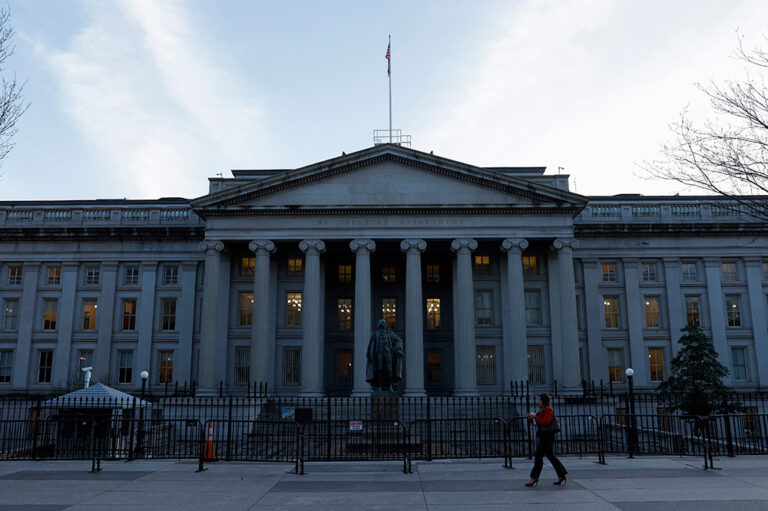Tax Breaks on Retirement Savings: Who Benefits and How Much Do They Cost?
Government-subsidized investment plans — such as 401(k)s, pensions, and Roth individual retirement accounts (IRAs) — represent a major part of many Americans’ retirement planning. The benefits that such individuals receive as a result of participating in these investment plans are in the form of tax breaks. Also referred to as tax expenditures, these tax provisions are like government spending in disguise because they reduce revenues coming into the federal coffers, contributing to higher deficits. Below is an explanation of how tax expenditures on retirement plans impact the United States’ budget, how these accounts are taxed, and who benefits from the assistance.
How Much Do Tax Breaks on Retirement Accounts Cost the Federal Government?
As a category, tax breaks for retirement savings are the federal government’s largest annual tax expenditure — greater than other large categories of tax breaks, such as those on dividends and capital gains and employer-sponsored health insurance. In 2024, according to the Joint Committee on Taxation, the United States gave up $397 billion in potential revenues for tax expenditures dedicated to retirement savings.
- The largest expenditure was for defined contribution plans (such as the 401(k), 403(b), and 457), totaling $212 billion.
- The next largest expenditure was for defined benefit plans, such as pensions, totaling $136 billion.
- The remaining $49 billion was for other retirement vehicles such as Keogh plans, traditional and Roth IRAs, and the saver’s credit.
What Is the Difference Between Defined Benefit, Defined Contribution, and Roth Plans?
There are many differences in retirement plans, both in how they operate for an individual and how they receive preferential tax treatment. The Employee Retirement Income Security Act (ERISA) of 1974 required employer-sponsored retirement plans to be designated as either a defined benefit (DB) or defined contribution (DC) plan.
A DB plan is a pension, which specifies the benefit that will be paid to a plan participant or the method of determining the benefit. The benefit amount is usually based on a formula that uses an employee’s average pay and years of service. Over time, the number of defined benefit plans has fallen, mostly because smaller firms stopped offering such plans. By the late 1990s, DC plans had overtaken DB plans in number of plans, number of participants, and total assets. Despite this trend, U.S. tax expenditures on DB plans have risen from $64.6 billion in 2008 to $135.9 billion in 2024 (in 2024 dollars).
Unlike DB plans, benefits from DC plans are determined by the amount contributed by employees and employers to such plans. The amount accrued in DC plans depends solely on the amount contributed, investment performance, and expenses. DB plans stay with the employer in which the benefits were earned, whereas an employee has the discretion to take the funds in a DC plan to another employer, roll it over into an IRA, or keep it with the former employer.
The tax treatment of income related to both traditional DC (which excludes Roth 401(k)s) and DB plans generates tax expenditures because taxes on contributions are deferred until withdrawal, delaying the revenues to the federal government. For traditional DC plans, all contributions are tax-deductible, whereas for DB plans only employer contributions are tax-deductible. The revenues that the United States has given up through DC plan tax expenditures has grown from $78.0 billion in 2008 to $212.0 billion in 2024 (in 2024 dollars).
Contributions to Roth plans (both the Roth IRA and Roth 401(k)), however, are not tax deductible. Instead, accruals are tax-free. Whether a taxpayer benefits more from a Roth account or a non-Roth account depends on a taxpayer’s marginal tax rate when they deposit funds compared to the time of withdrawal.
Who Benefits from Retirement Tax Breaks?
High-income earners are more likely to benefit from tax breaks for retirement savings, according to the Congressional Budget Office (CBO). In its evaluation of retirement-related tax expenditures, CBO found that 77 percent of individuals in the highest quintile benefited from retirement-related tax expenditures while only 19 percent of individuals in the bottom quintile benefited. CBO states that reasons for this distribution are that higher-income taxpayers are more likely to have employers who offer retirement plans; the benefit of such plans increases with income; and, higher-income taxpayers are subject to higher marginal tax rates, which increases the value of the tax deduction.
Not only are higher-income taxpayers more likely to benefit from the tax treatment of retirement plans, but they also receive much more of the total benefit of those tax breaks. In 2019, of the $201.6 billion tax expenditures analyzed by CBO, the highest-income quintile received 63 percent of the benefits ($126.7 billion), while the lowest-income quintile received just 1 percent of the benefits ($1.4 billion). According to the Bipartisan Policy Center, the reasons for the lopsided distribution in the total benefits are similar to those explaining the uneven distribution in the share of beneficiaries: low-income households have less access to retirement plans, weaker incentives to save, and less money to save.
Conclusion
The tax treatment of retirement accounts play a large role in the economic security of older Americans, and also have a significant effect on our fiscal outlook. Current tax expenditures for retirement significantly reduce federal revenues and drive budget deficits higher. Given America’s unsustainable fiscal outlook, policymakers should examine the design and impact of retirement tax expenditures as part of a comprehensive approach to tax reform and economic security for seniors.
Photo by Joe Raedle/Getty Images
Further Reading
What Types of Securities Does the Treasury Issue?
Let’s take a closer look at a few key characteristics of Treasury borrowing that can affect its budgetary cost.
Quarterly Treasury Refunding Statement: Borrowing Up Year Over Year
Key highlights from the most recent Quarterly Refunding include an increase in anticipated borrowing of $158 billion compared to the same period in the previous year.
Budget Basics: Unemployment Insurance Explained
The Unemployment Insurance program is a key counter-cyclical tool to help stabilize the economy and speed recovery during downturns or crises.


